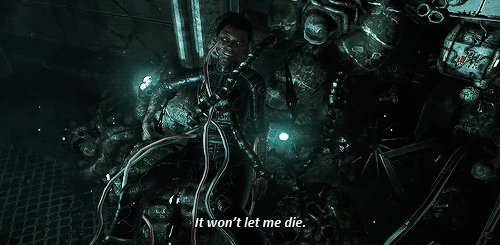Introduction into agency
Creating
meaningful play through the use of empathy and agency:
The
relationship between player and space
What is agency?
Agency is the feeling that the user has an effect on the virtual
environment through the choices they make. Agency in sociology terms
refers to the capacity of individuals to act independently and to
make free choices. In sociology terms there are 3 different types of
agency:
Individual; is when a person acts upon his/her own behalf.
Proxy; when one acts on the behalf of someone else
Collective; when people act together towards a shared goal.
When we talk about agency we also have to look at investment in
games, particularly the conditions of investment when the game makes
you do something uncomfortable, games such as 'The walking dead' is a
great example of this. In games we need a strong sense of contingency
and to know our interactions with a character actually matter and
make a difference. The role of narrative in games has been the
subject of much debate. One of the central points of this debate
positions game narrative as being inherently in conflict with the
player’s desire to act within the game world. This so-called
tension between narrative and interaction has given rise to a vast
array of design techniques, intended to either control the actions of
the player via various guidance strategies or to shape the evolution
of the story. For example if it is made clear that no matter what you
do ' X' is going to happen, then that destroys the players sense of
illusion of choice. Through this essay I want to explore how agency
and empathy can work in tangent to be used in creating a better
feeling of immersion and the need for contingency through the
illusion of choice.
However we need to look at the parameters surrounding agency when
used in games.
A lot of people use the definition of agency as freedom from
restrictions. Perhaps an extreme variation on this comes from Gonzalo
Frasca, who completely disassociates agency from meaning. He
writes: “the more freedom the player is given, the less personality
the character will have. It just becomes a ‘cursor’ for the
player’s actions.”
Mateas and Stern (co-creators of the artificial intelligence based
art experiment in electronic narrative game 'Façade' and 'the party'
) provide a more contributory approach to agency, proposing a more
restricted definition. “A player in an interactive media becomes a
kind of author, and contributes both materially to the plot and
formally to elements at the level of character on down. But these
contributions are constrained by the material and formal causes
(viewed as 'affordances' by the author of the interactive media).
Hopefully, if these constraints are balanced, the constrained freedom
of the player will be productive of agency”
Mateas and Stern's idea that in an interactive media the player
becomes a kind of 'author' of the environment and narrative reminds
me similarly of Roland Barthes ideas in his a 'death of the author'
essay in which he attacks the tradition of “classic criticism”;
which he describes as being centred on commentary on the author,
presenting the argument that there is no such thing as the 'author'
of a text ( here he includes text as meaning anything up to
interpretation that has a 'creator' whether that be literature or
art) the author is merely a 'scriptor' who’s ideas are not entirely
original, it is not the author, but language that speaks, therefore
the text requires analysis of language. Barthes emphasises that once
the author is removed, it is within the reader of the text that any
meaning is derived as the text is open to multiple interpretations by
the reader, deeming the
reader as the more creative force.
Can we make the players the 'authors' of their own creation in game?
Research
sources:
-
Commitment to Meaning: A Reframing of Agency in Games:
by Karen Tanenbaum and
Joshua Tanenbaum
-
Designing Games to Foster Empathy
by Jonathan Belman and
Mary Flanagan
-
Player Agency in Interactive Narrative: Audience, Actor & Author
by Sean Hammond1 and Helen
Pain and Tim J. Smith
-
Immersion vs. Interactivity: Virtual Reality and Literary Theory
by
Marie - Laure Ryan























